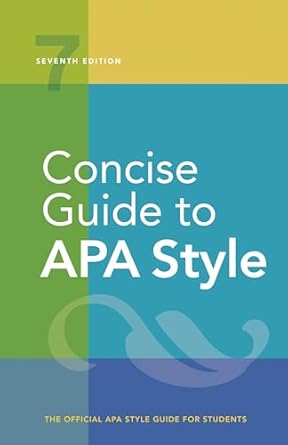[toc]
biasfree language guidelines importance
Concise Guide to APA Style: 7th Edition (OFFICIAL)
Page 79 Review
Bias-Free Language: A Critical Analysis
In academic and professional writing, particularly when adhering to APA Style, the importance of bias-free language cannot be overstated.
The guide, encapsulated in the principle that writers must “strive to use language that is free of bias, meaning the implied or irrelevant evaluation of the group or groups they are writing about,” serves as a crucial foundation for fostering inclusivity and respect.
This essay will delve into the core tenets of these guidelines, illustrating why they are essential for ethical communication and the advancement of knowledge.
The Foundation of Respect and Accuracy
The APA’s commitment to both “the advancement of science and the fair treatment of individuals and groups” highlights a fundamental connection between rigorous research and responsible communication.
The document explicitly states that “these principles require that students and authors who use APA Style avoid perpetuating demeaning attitudes in their writing.” This is not merely a stylistic preference, but a moral imperative.
By avoiding language that might “imply prejudicial beliefs or perpetuate biased assumptions,” writers actively contribute to a more equitable and just society.
Specific Areas of Bias
The guidelines identify several key areas where bias can manifest, including: “age, disability, gender, participation in research, racial or ethnic identity, sexual orientation, socioeconomic status, or some combination of these or other personal factors (e.g., marital status, immigration status, religion).” The breadth of this list underscores the pervasive nature of potential biases and the need for constant vigilance.
It is essential to recognize that bias can be subtle and unintentional, often embedded within societal norms and unconscious assumptions.
Moving Towards Affirming and Inclusive Language
The alternative to biased language is “affirming and inclusive language.” This involves actively choosing words and phrases that acknowledge and respect the diversity of human experience.
Instead of perpetuating stereotypes or making generalizations, writers should strive to use language that is specific, accurate, and respectful of individual identities.
This requires a conscious effort to challenge ingrained biases and adopt a more nuanced and empathetic perspective.
Practical Steps for Implementation
The guide suggests a practical approach: “Just as you have learned to check what you write for spelling, grammar, and wordiness, practice rereading your work for preconceptions about groups of people.” This highlights the importance of self-reflection and critical evaluation.
It’s not enough to simply be aware of the guidelines; writers must actively apply them in their own work.
Seeking feedback from members of the groups being written about, as the guide suggests (“When possible, ask people from the groups about which you are writing to read and comment on”), provides invaluable insight and helps to identify potential biases that might otherwise go unnoticed.
Examples and Further Resources
The APA Style website (https://apastyle.apa.org) offers “more examples of bias-free language.” This resource is essential for writers who are committed to improving their communication skills and promoting inclusivity.
By studying these examples, writers can learn how to avoid common pitfalls and develop a more nuanced understanding of bias-free language principles.
The Importance of Continuous Learning
Bias-free language is not a static concept; it is constantly evolving as societal norms and understandings change.
Therefore, it is crucial for writers to engage in continuous learning and self-reflection.
This includes staying informed about current debates and best practices, as well as being open to feedback and criticism.
The Broader Impact
The use of bias-free language has a profound impact on both individuals and society as a whole.
By promoting respect and inclusivity, it helps to create a more welcoming and equitable environment for all.
Furthermore, it enhances the credibility and impact of research, as it demonstrates a commitment to ethical principles and responsible communication.
In conclusion, the APA’s bias-free language guidelines provide a crucial framework for ethical and effective communication.
By actively striving to eliminate bias from their writing, writers can contribute to a more just and inclusive society, while also enhancing the quality and impact of their work.
The key takeaways are summarized in the provided text:
- Awareness: Recognizing the potential for bias in language.
- Action: Actively choosing affirming and inclusive language.
- Assessment: Regularly rereading and evaluating work for preconceptions.
- Asking for Feedback: Seeking input from the groups you are writing about.
- Accessibility to Resources: Utilizing resources like the APA Style website.
- Adoption of Style: Applying bias-free language principles in daily life and work.
Buy full ebook for only $18: https://www.lulu.com/shop/american-psychological-association/concise-guide-to-apa-style-7th-edition-official/ebook/product-rmzpq54.html?page=1&pageSize=4
Biasfree Language Guidelines Importance
Read more: Citation Styles Guide: Mastering Academic References


Leave a Reply